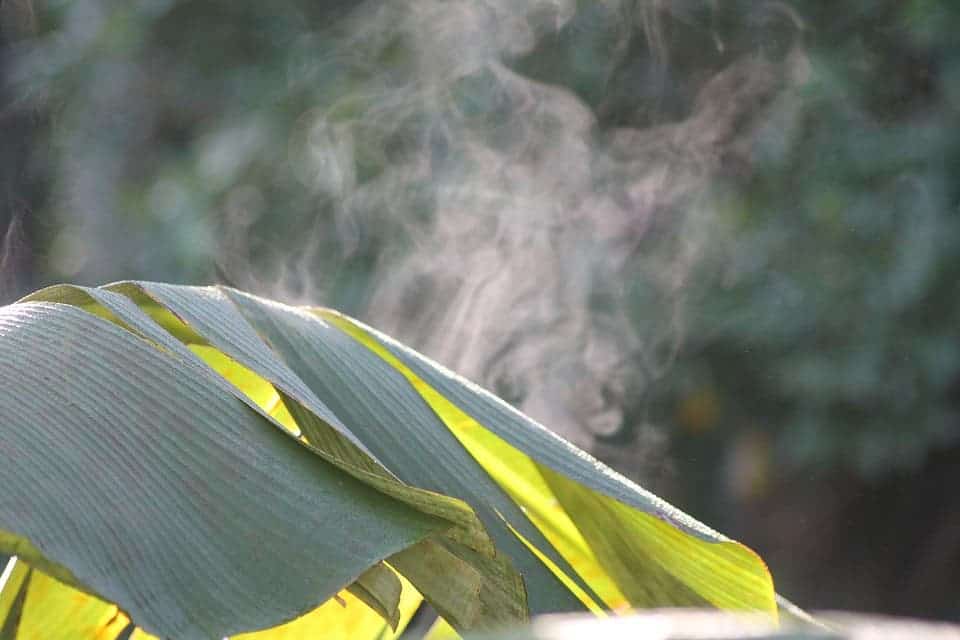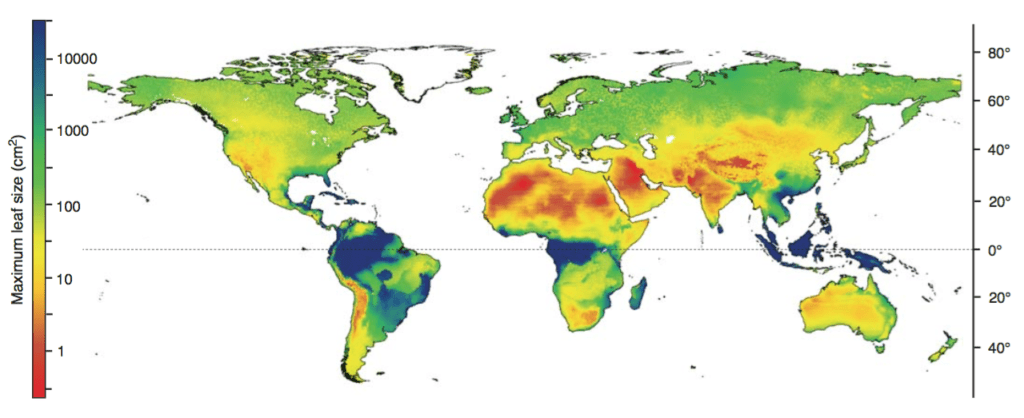There are hundreds of thousands of plant species growing on our planet whose leaf surface area varies from as small as one square millimeter to one square meter. Previously, scientists have identified that the amount of sunlight and available water are prime factors that determine how large a leaf can get but this isn’t a complete picture.
A new study that analyzed leaf size for more than 7,000 plants found both daytime and nighttime temperatures play a critical role. Specifically, plants have to strike a delicate balance in order to both reduce the risk of overheating and the risk of freezing.
Just right
The findings help explain why plants in the tropics grow far larger leaves than in any other area of the globe. The banana’s leaf, for instance, is a million times bigger than that of the common heather.
Because it has loads of available water, for all practical purposes in indefinite amounts, the banana leaf can grow to huge sizes. Practically, according to the Australian researchers at the University of Queensland who carried out the research, there’s no limit to how large a leaf can grow if there’s enough water — that’s if only water availability were important.
The real limit is governed by both day time and night time temperature, though.
Since the surface area is greater, large leaves are more vulnerable to freezing at night when the temperature dips. Larger leaves are also thicker, which entails a slower heat exchange with the ambient air. Likewise, during the daytime, leaves risk overheating if temperatures climb over a threshold.
The researchers learned of this relationship after they plugged a series of equations which predict the maximum viable leaf size anywhere in the world based on the risk of daytime overheating and night-time freezing into a computer model. Their predictions matched the observed data.
The main predictor for leaf size is frost risk
Previously, the textbook theory explained leaf size variability in terms of available water and the risk of overheating. In those places with high rainfall, such as in the tropics, leaves grow larger while small-leaved plants flourish in arid and high altitude environments. However, this explanation does not capture the entire complexity of leaf size variability.
Instead, the authors reported in the journal Science that:
- daytime temperatures place an upper boundary on leaf size for plants growing in arid environments since optimal transpiration is not possible when water supply is limited;
- in wet environments, however, its night-time temperatures that constrain leaf growth to achieve effective transpirational cooling;
- in both wet and warm environments, such as the tropics, there seem to be no thermal constraints. Instead, physical limits likely impose a maximum leaf size.
This neat map put together by the researchers shows that as we move to areas with higher average annual temperatures, average leaf size increases.
These findings are very important in today’s climate change context helping scientists better understand how well equipped plants are in the face of an ever warming world. Specifically, scientists ought now to be able to build better models that predict how different types of vegetation may shift in response to climate change.
For Dr Elizabeth Law, a postdoc fellow at UQ School of Biological Sciences and lead author of the study, it’s also about the thrill of contributing to a new ecological theory.
“Not just observing patterns and changes, but really being able to explain why they happen,” she said.
“It’s the first step towards better predictions of the future.”











